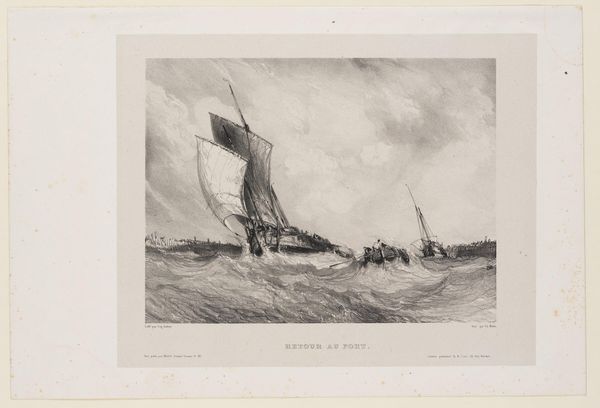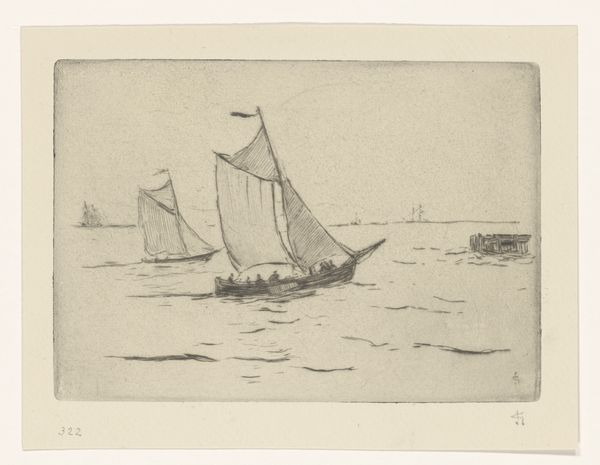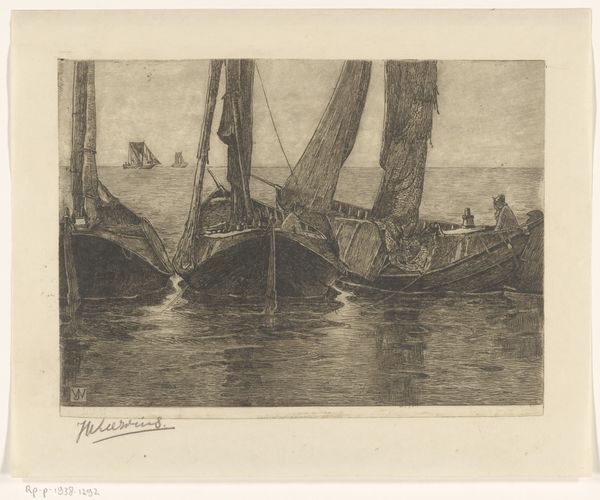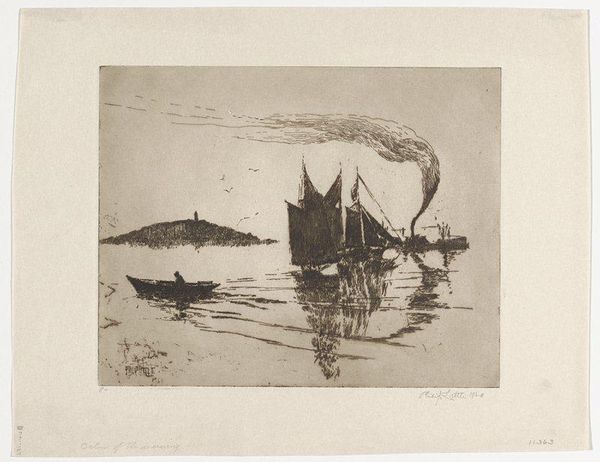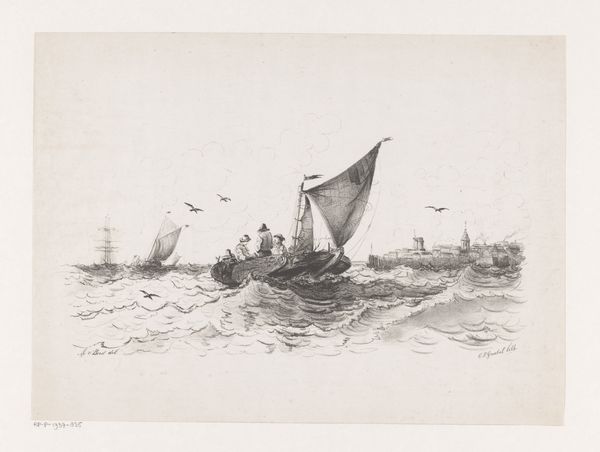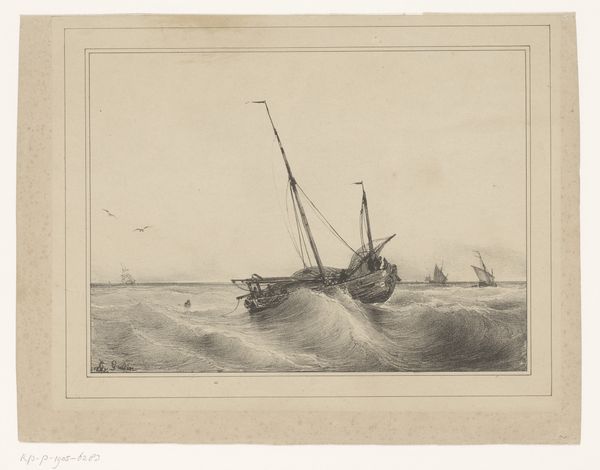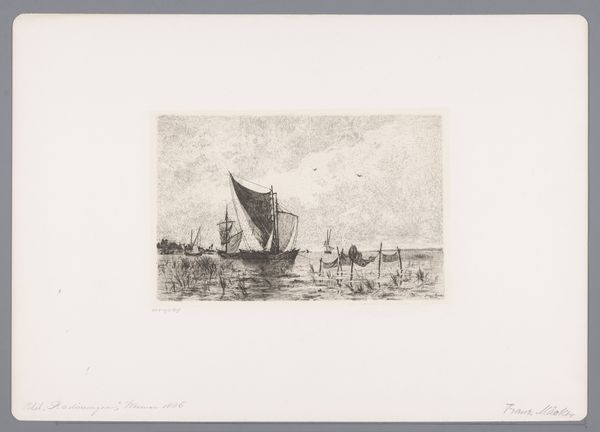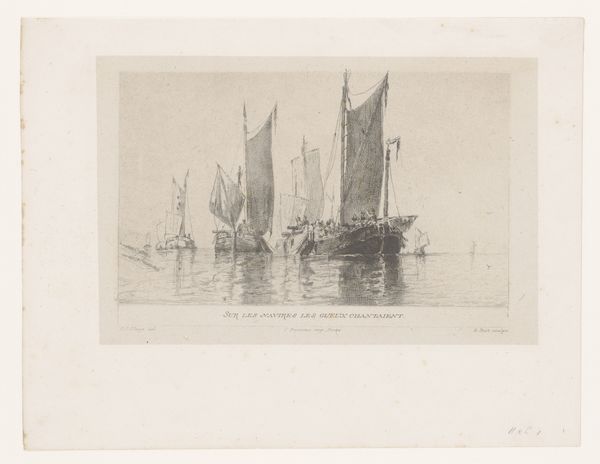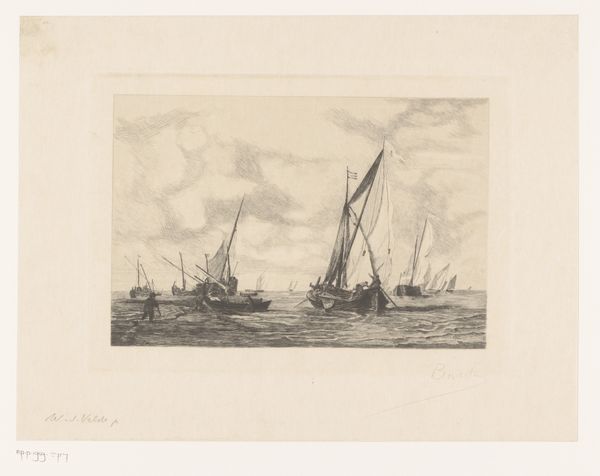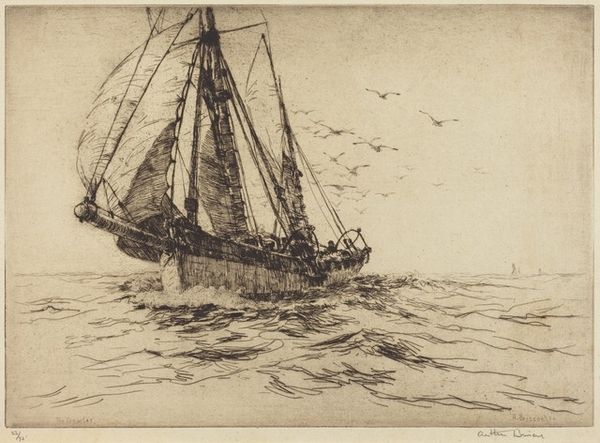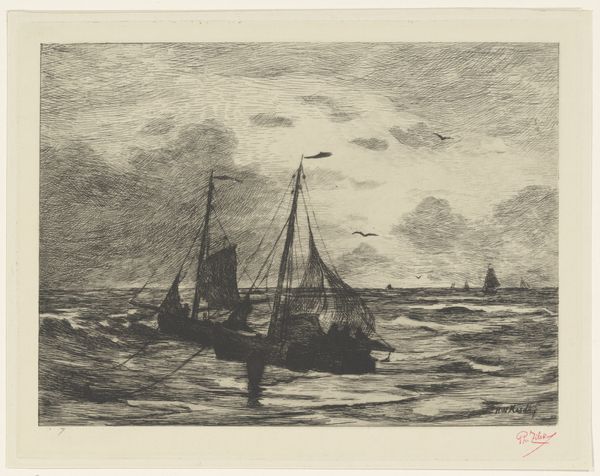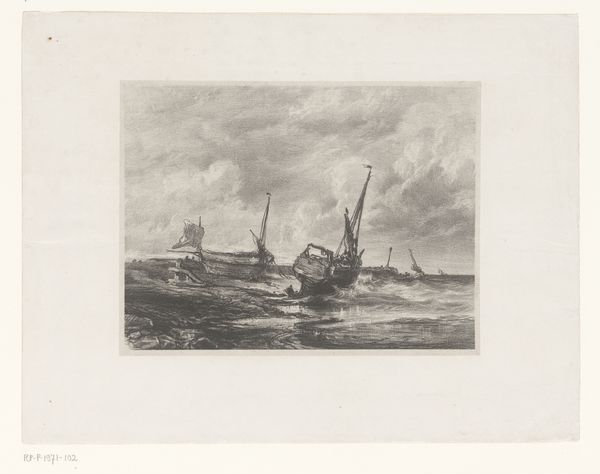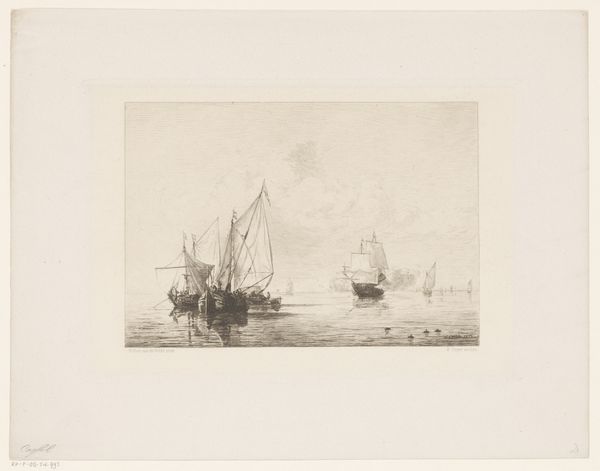
print, etching
# print
#
etching
#
landscape
#
line
#
realism
Dimensions: 9 7/8 x 9 15/16 in. (25.08 x 25.24 cm) (plate)13 5/8 x 15 3/16 in. (34.61 x 38.58 cm) (sheet)
Copyright: No Copyright - United States
Curator: "In a Seaway," created in 1922 by Philip Little, now held in the collection of the Minneapolis Institute of Art. The artwork utilizes etching on paper as a medium, creating a visually striking composition. Editor: There’s an almost unsettling immediacy to it. The texture and detail, created using etched lines, evokes both a sense of motion and of tension. The lack of color contributes to this mood, a kind of foreboding gray scale of the industrial and natural realms. Curator: That immediate feeling you’re sensing speaks volumes. In the early 20th century, maritime subjects became a space for exploring not only aesthetic beauty but the social realities tied to marine life, transport, and labour. Prints like this democratized access to art as well. Editor: Yes, there is certainly the sense of the common person as the protagonist. Take, for example, the composition of the artwork; even the sea and sky seems to emphasize an interaction with labour in a humble sort of way. I mean, if you examine Little’s treatment of these scenes, especially his decision to go with an etching rather than painting—does the work become less a celebration of the seascape and more about illustrating an accessible point about labor and society? Curator: Perhaps it reveals multiple dimensions. The visual language and linear qualities speak to a connection between individual identity and the wider world during that inter-war period, and beyond. Etching captures not just appearances, but, as I feel in this image, latent symbolic currents – especially if we compare this image to its pastoral precedents. Editor: I concede the latent symbolic potential. The placement of what seems to be two distinct boats - one is perhaps more industrially inclined than the others, makes the scene a visual bridge connecting us to different periods in nautical history. And the contrast between the lightness in the sky, opposed against the grittiness in the boats also communicates that visual message loud and clear. Curator: It really is a visual poem; reflecting on a cultural transition still felt today. Thanks for these astute observations. Editor: The pleasure was all mine. What better place to muse than in front of art?
Comments
No comments
Be the first to comment and join the conversation on the ultimate creative platform.
